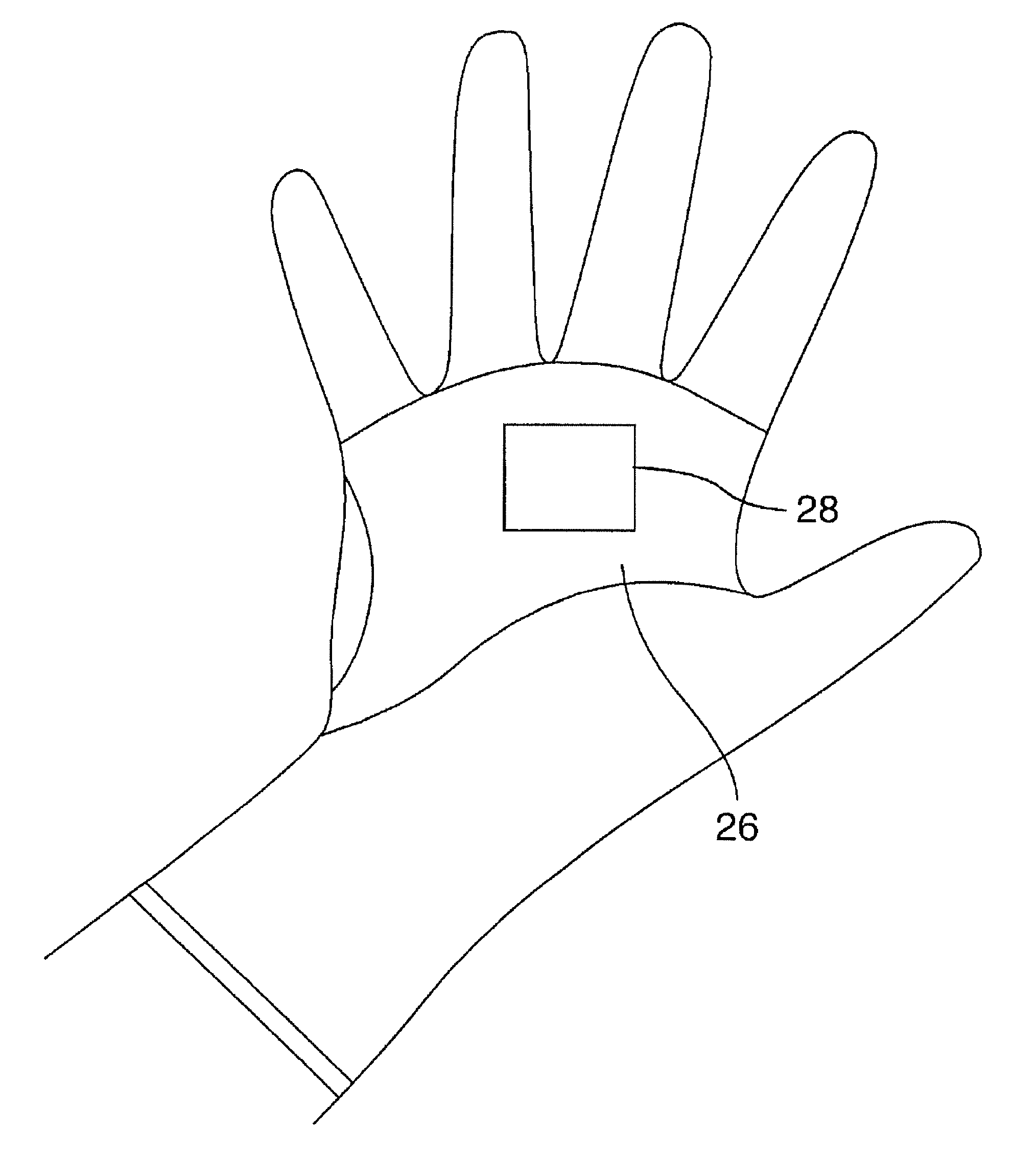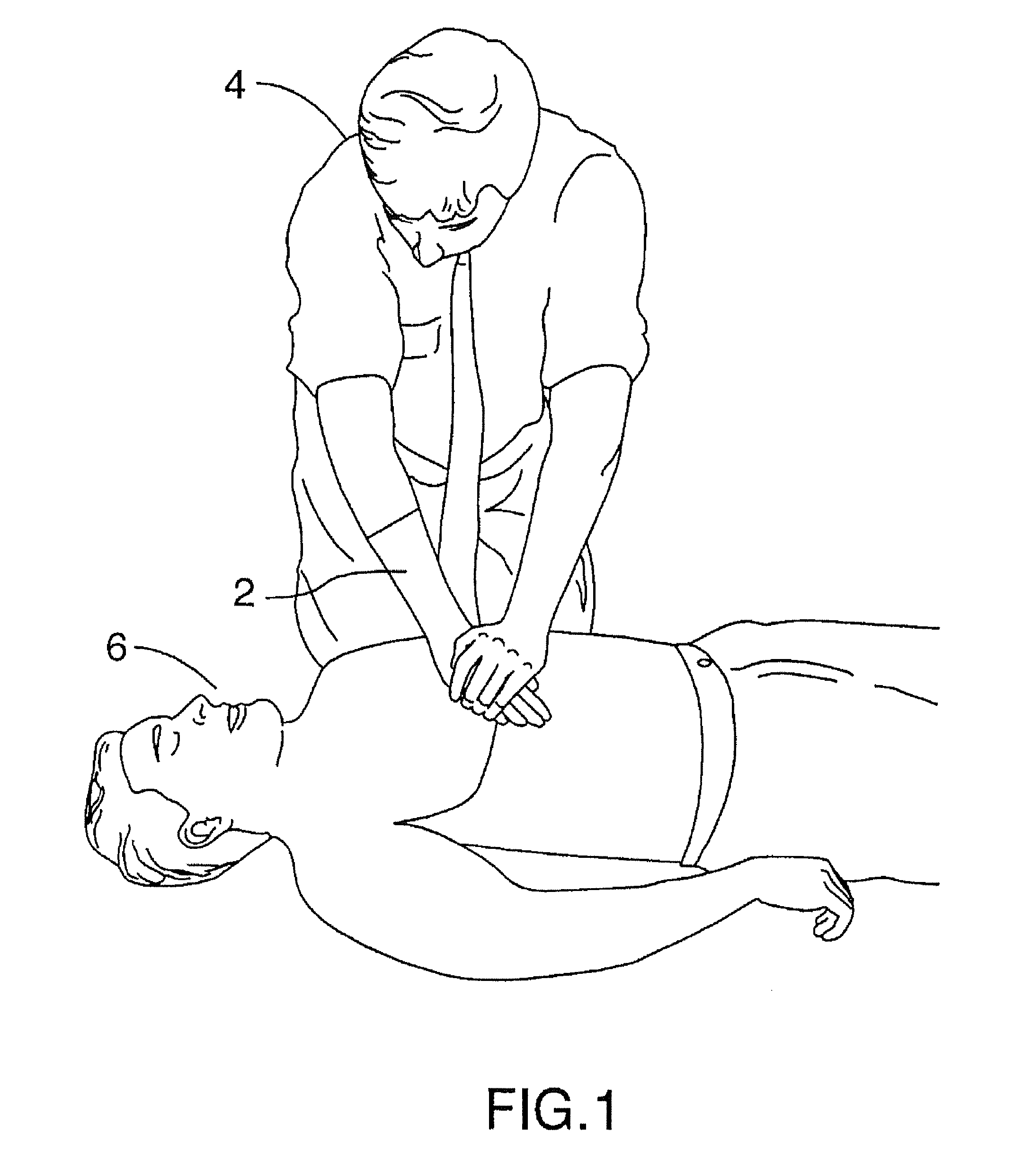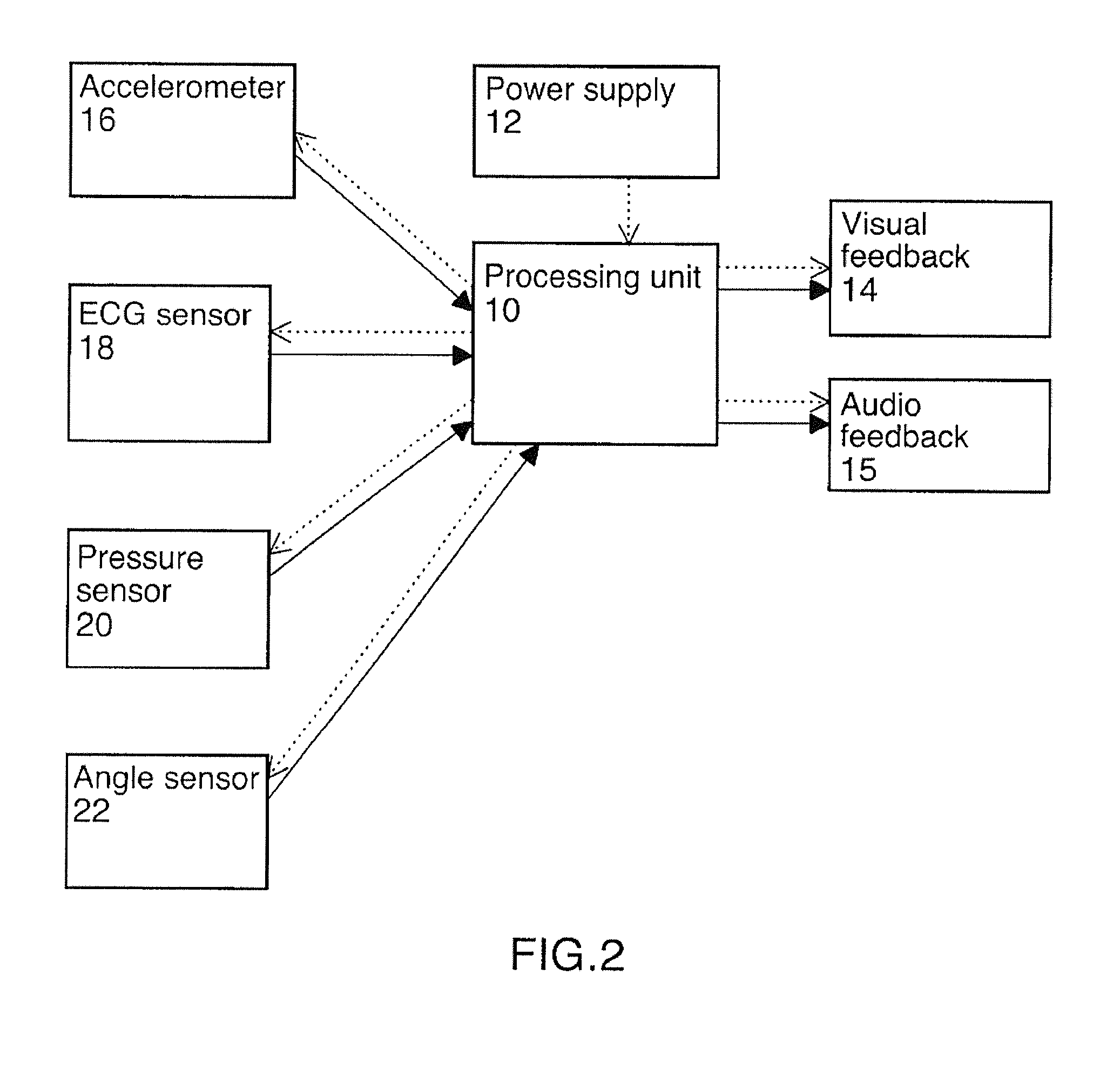Wearable cpr assist training and testing device
a technology of assist training and testing, which is applied in the field of wearable cpr assist training and testing devices, can solve the problems of confusion and hindering the individual in delivering proper treatment, poor quality of cpr, and insufficient retention of proper cpr techniques and protocols, etc., and achieve the effect of improving the performance of cardiopulmonary resuscitation
- Summary
- Abstract
- Description
- Claims
- Application Information
AI Technical Summary
Benefits of technology
Problems solved by technology
Method used
Image
Examples
Embodiment Construction
[0040]The CPR assist device may be used to assist a CPR performer to carry out a CPR procedure on a patient. The device may also be used to train a CPR performer to properly perform CPR. The device may also be used to test whether a CPR performer is performing proper CPR. As such, although referred to as a CPR assist device, the device may be used not only for assisting in performance of CPR, but also or in the alternative be used for training or testing purposes. All examples and embodiments discussed in the present application are for purposes of illustration only and are not intended to be limiting.
[0041]The CPR assist device may include a wearable article containing the following basic components: a sensor and a feedback component. The device may also include a processing unit such as a microcontroller, and a power source or connection to a power source. Although the description and examples may refer to a microcontroller, the processing unit may be an analog circuitry, a microp...
PUM
 Login to View More
Login to View More Abstract
Description
Claims
Application Information
 Login to View More
Login to View More - R&D
- Intellectual Property
- Life Sciences
- Materials
- Tech Scout
- Unparalleled Data Quality
- Higher Quality Content
- 60% Fewer Hallucinations
Browse by: Latest US Patents, China's latest patents, Technical Efficacy Thesaurus, Application Domain, Technology Topic, Popular Technical Reports.
© 2025 PatSnap. All rights reserved.Legal|Privacy policy|Modern Slavery Act Transparency Statement|Sitemap|About US| Contact US: help@patsnap.com



